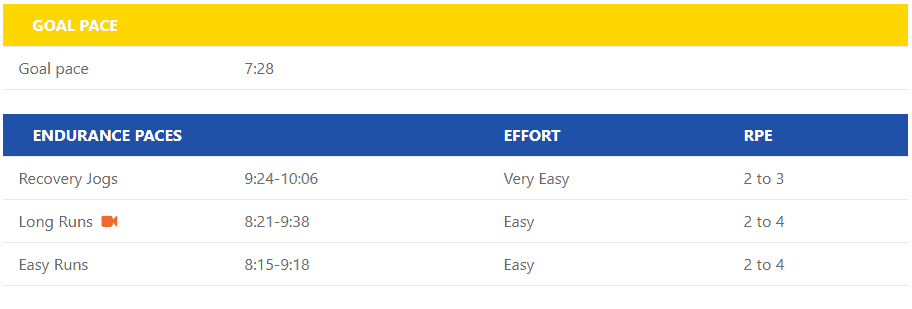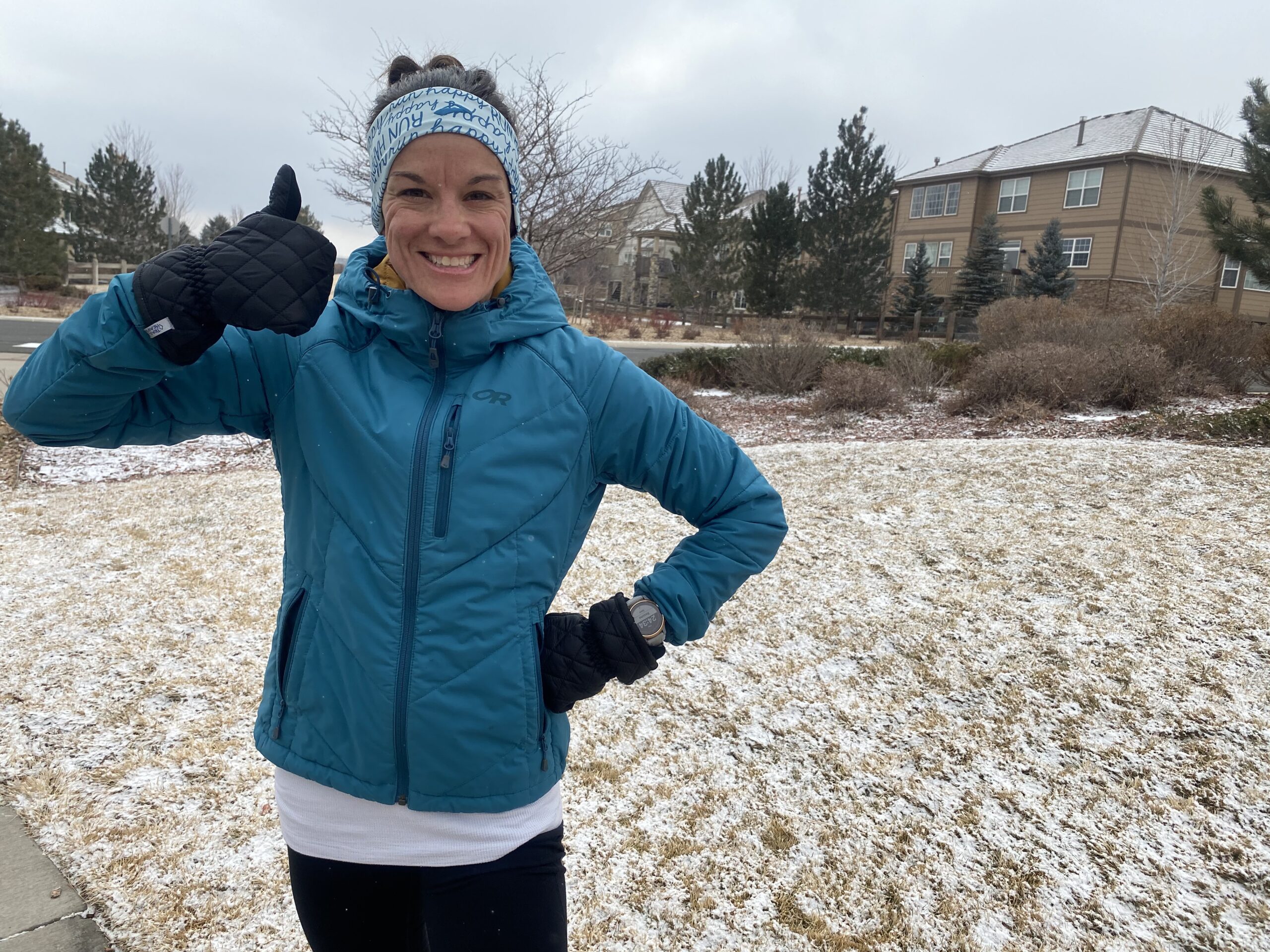Conversational pace is a frequently used term in the world of running. You may have a training plan that asks you to complete a scheduled run at a “conversational pace.”
Conversational pace is an easy running pace in which you can run while comfortably holding a conversation. Even when running alone this can be determined by talking to yourself, humming or singing. Including conversational pace running into your regimen is important.
You may be thinking that if you’re able to hold a conversation during your run then you’re not working hard enough, but this type of easy-paced running is actually really important for building endurance as well as staying injury-free. Let’s converse about it! (See what I did there…)
Talking While Running: People do that?
For years, any run I would do would be completed at my max limit (AKA NOT conversational pace). I was always trying to beat my previous times on certain routes or outrun my husband. Think of it as olden day Strava segments – ha! Was there any talking during my running? Absolutely not.
When my dad and I trained for a marathon many years ago (long before I really understood what went into quality training) we would notice all of these other runners happily chatting away during our Sunday long runs. And there we were just trying to stay in a zone to make it through somehow.
And it wasn’t that these other runners weren’t working hard enough, in fact the opposite was true. They were doing exactly what they were supposed to be doing for that particular training day…which was to run at their easy pace.
And easy pace = conversational pace.
Notice that I did not say slow. Obviously the word “slow” has negative connotations and we don’t want that when I’m trying to help you understand that conversational pace is a good thing!
Now there is no way I could have a conversation at the pace those other runners were – they were basically doing so while lapping us. That’s why each runner needs to find their own personal conversational pace.
How to Find Your Conversational Pace
It might sound simple enough for a coach to say, “Run at a conversational pace – ok, bye!” thinking that was enough info for you. But most people are probably still doing these runs too fast.
Here is what conversational pace is NOT:
“What – gasp for breath – are you – gasp for breath – are you up to – deep gasp for breath – this weekend? – gasp for breath!” This may seem like you are holding a conversation since you’re technically getting words out, but this isn’t conversational pace.
Instead, conversational pace is the speed of running at which you could hold a conversation with someone without having to catch your breath. You should be able to breathe while simultaneously speaking.
Here is what conversational pace looks like:
- You can get out 1-2 full sentences with ease.
- You can say what you need to say without a huge inhale like you were just holding your breath for way too long.
- You’re very comfortable running at this pace for an extended period
But sometimes this can be a bit tricky to pinpoint, especially if you’re running alone, so here is a little bit more guidance:
- Hum a tune. This requires you to breathe through your nose. If you can easily hum a couple lines of a song without gasping or breath – slow down until you can. Singing will work, too.
- Try only breathing through your nose. Can’t do it? Then you need to slow down until you can.
Runners really could do better to listen to their bodies and run by feel much more often than to pay attention to numbers on a watch or heartrate monitor all the time – in other words if you just do those suggestions above, you’re set. However, I see you numbers-driven people (that would be me) so here is something you can utilize to help you find your conversational pace.
If you’ve read some of my articles, you might know how much I love using McMillan’s calculator. This is a great way to find your easy/conversational pace as long as you have a recent time trial or race time you can input.
Using Pace Charts or Heartrate Monitor to Help Determine Conversational Pace
Pace Charts/Calculators:
In the picture below, I put in my current 10k pace which is 7:28. From there, it spit out many paces for my training – I’ve included what it gave for my endurance (the easiest) paces.

You’ll see that there are 3 different pace ranges, so which one should you look at for conversational pace? Well, I can tell you right now that the fastest pace shown – 8:15 – is not a pace at which I could hold a conversation. If I were you, I would start with the recovery jog pace they give and start there.
If it doesn’t feel comfortable or sustainable over several miles, it’s too fast.
Heartrate Monitors:
If you’re having a hard time nailing down conversational pace on your own, another tool that can come in handy is a heart rate monitor. When in doubt, your heart rate is a great gauge go to figure out if you’re slowing down enough when you’re supposed to be sticking to that really easy pace.
A formula often used to find your maximum heart rate is 208 – (.7 x your age). (You can also check out Maffetone Method for a more accurate way to find MHR).
At 40 years old, that puts mine at 180 MHR. For an easy paced run, you want to be around 70% of your maximum heart rate. It’s going to feel very slllooowwww. And that’s a good thing. But I’ll admit it’s hard. I can be closer to 80% and still be at conversational pace – you’ll need to find what works best for your personally.
Keep in mind that even the very best running watches – I have a Garmin Fenix Sapphire which I love – aren’t perfect when it comes to heart rate because it’s measure on your wrist. If you plan to do heart rate training, you need to use a chest strap for accuracy.
Ultimately, on easy run days, there is really no such thing as too easy. If you’re still running (which is anything but walking) you are reaping the benefits of conversational paced runs. (And if you can’t yet run at a conversational pace read on for tips to get there!)
Which leads us into exactly why you should be incorporating runs at conversational pace.

Why Running at Conversational Pace is Important
Learning to run at conversation pace isn’t just beneficial, it’s an important part of race training. No matter what distance you’re prepping for, conversational pace has a place in your training regimen.
In my article, “Train Slower to Run Faster Marathon,” I go over the reasons why easy running helps propel runners to the faster marathon times they’ve been working so hard to achieve. Most runners run way too fast. You might be thinking, is there even such a thing? Shouldn’t we be working hard when we work out, in this case run? After all “try this really easy workout” said no ad ever.
But if you’re looking to optimally train for a race, increasing mileage is key. But when you increase mileage you also increase the risk for injury if you don’t slow down some of your running to a conversational pace. Plus do you really want to dread every single run you do? Many people might think just going out for a easy jog is counterintuitive to their workout goals, but it’s quite the opposite if you want to keep it up long-term and stay a healthy runner.
Here are the benefits of running at conversational pace:
- You’re able to increase mileage. You’ll be amazed at how much further you can go if you slow down to your easy pace. I’ve heard so many runners say something like, “I always get stuck at 5 miles…I just can’t go any further!” Often times this is because they are pushing every run so hard that they never give their body time to adapt to a further distances. Mixing in easy, conversational pace a few times a week is necessary for this.
- You build your aerobic system. Are you looking to build endurance and run longer races and faster? The way to do this is by running longer in training. And the only way to build that up is to slow down. Over time, your aerobic system is developing and adapting to higher mileage – where your body adjusts to moving oxygen around your body more efficiently to create energy even as your distance increases.
- You’re able to recover between hard run days. I write about this in-depth in “The Importance of Recovery Runs in Marathon Training,” (though everyone needs recovery runs – not just marathon runners). Essentially, in order for your body to reap the benefits of hard workouts (think speed workouts and long miles), there has to be time for the muscles and tissues to repair themselves. Though complete rest days can be good, too, often it’s better to get the blood flowing and joints moving through an easy, conversation paced run.
- You can catch-up on your runner friends’ lives (or call someone): Sometimes it’s hard to find time to schedule the coffee or dinner dats with our friends that we’d like to, so being able to go for a run with a friend to chat is the perfect way to get in the miles you need while getting the social outlet you also desire. Plus, the miles really fly by when you’re talking with a friend and its always nice to have a run where you’re not focusing on the actual running part.
- Focus on your running form. Often if you’re too busy breathing hard and focusing on just getting through your run without having to stop, your form suffers. Of course you wouldn’t realize this in the moment. Easy paced running gives you the opportunity to pay attention to your running form and any tweaks you’re needing to make.
- You can include a warm-up and cool-down. These are both really important for injury prevention. Some runs, like recovery runs, will be completed entirely at conversational pace. Other days where you might have speed work, you’ll still need to do a warm-up and cool-down at an easy conversational pace. Don’t skip these!
- It brings joy to running. It can be fun and rewarding to run hard – I feel that for sure. But it’s not sustainable to do that for every run. Eventually you’ll burn out. Running at a pace that doesn’t hurt where you can just enjoy getting lost in your thoughts or listening to a good podcast means running doesn’t have to be something to dread.

Let me reiterate. Conversational paced running is a necessary part of training, no matter how great of a runner you are. In fact, if you’re not doing any, you’re probably not as great of a runner as you could be.
There’s one more question I want to address that might apply to you if you’re a newer runner.
What if I am running as slow as I can and I still can’t hold a conversation?
For beginner runners, this is a very valid question! And honestly, there may not yet be a running pace for you in which you can hold a conversation.
What I would recommend is incorporating brisk walking at first for your recovery days as well as during your warm-ups and cool-downs. As you go, you can start incorporating the slowest running you can do for intervals of 1-2 minutes and then walk for 1-2 minutes. Be sure you’re still incorporating speed interval training on your harder run days. Your body will start to adapt and eventually you’ll have conversational paced running you can handle. It takes time – keep sticking with it and don’t give up!







